Kanagawa — Paint your masterpiece
In Kanagawa, players take on the role of art students in 19th Century Japan. In a time-honoured tradition, the students will compete to improve their skills, expand their own studio and compete to make the best impression on their master.
Kanagawa presents a straightforward, attractive and unusual take on the traditional card drafting and set collection mechanic that you’ll probably have seen dozens of times before. Thankfully, the quality of IELLO’s components and the richness of the the theme come together to make a game that stands apart from the crowd.
Each game begins with the placement of a board made from bamboo sticks that rolls up into the box. If this wasn’t striking enough, the second component that you’ll likely notice will be the individual paint pots, each of which is a wooden piece about an inch high, complete with independently painted pot and brush. As always, IELLO pulls no punches with the quality of its components and this high standard continues through the various cards and tiles that come with the game.
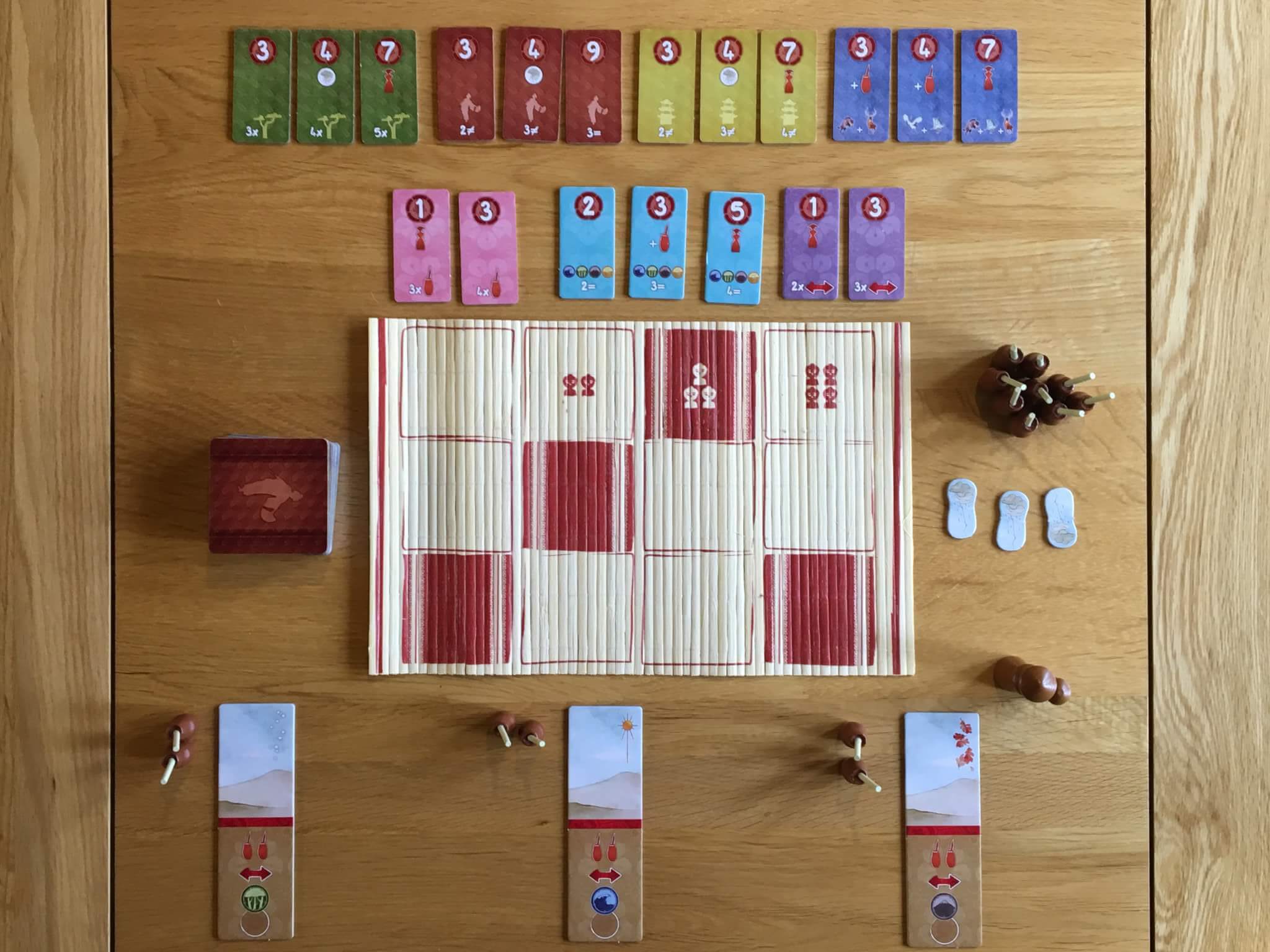
The purpose of the bamboo board — which has four columns and three rows — is to hold the different paintings that will be drawn each round. As such, Kanagawa is able to scale extremely well at all player counts — from two to four. Simply put, the game uses one column per player, so two will be in play in a two player game and four at the full count.
The first player will then draw cards from the face down deck of lesson cards and place them from left to right along the top row — bear in mind that this will be mean two cards are drawn in a two player game and four in a four player game (one for each column.) Cards are always placed face up, except on red spaces, where they are secretly placed face down so that no one knows what is shown on them.
Now each player has an opportunity to claim a column — but bear in mind that in the first round, that will equate to just one card. Regardless of whether anyone does, the first player will again draw cards and place them left to right in the next row. If a player did claim a column, then that column will not receive a card. As you can imagine, a column with two cards is twice as valuable as a column with only one, but it can still be worth waiting until the column you want has all three cards in it, even if you don’t want the third card so much — I’ll explain more on this in a moment.
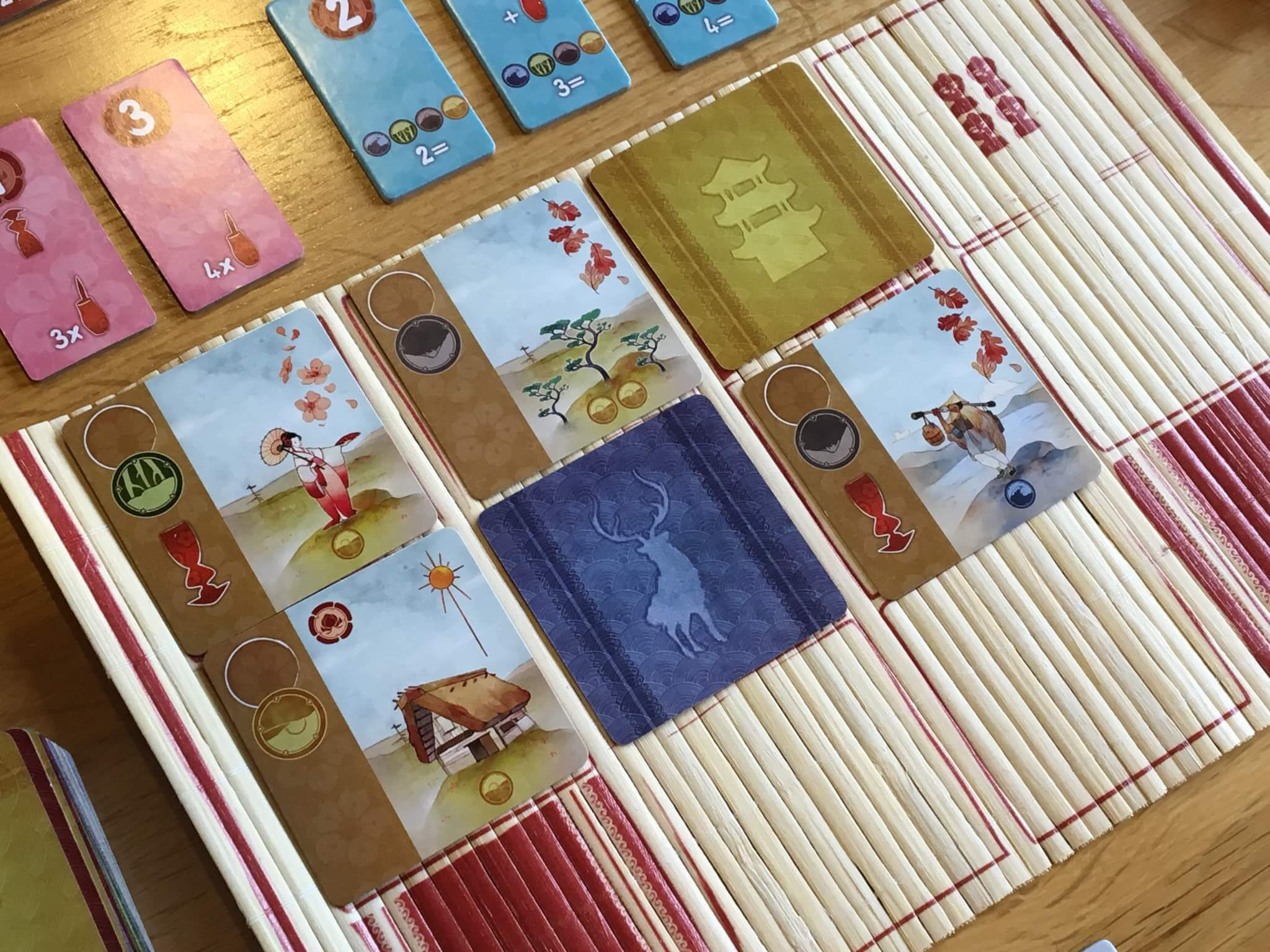
Ultimately, each player is going to claim a column, it’s only a matter of when. If no players claim columns until the final card row is drawn, then the players will choose in order, which means that in general, the players who will act later in the turn order are the ones who should be considering grabbing a column with only two cards, since their chance of getting two cards that they might want will be greater than if they wait, at which point they’ll get whichever three cards are left.
But what does it matter which cards they get? What makes the different choices so important? Well, each card can be used in one of two ways. A card has two sides to it — the left hand column which is essentially just icons and then the right, which is an actual portrait of a person, animal, tree, building or landscape.
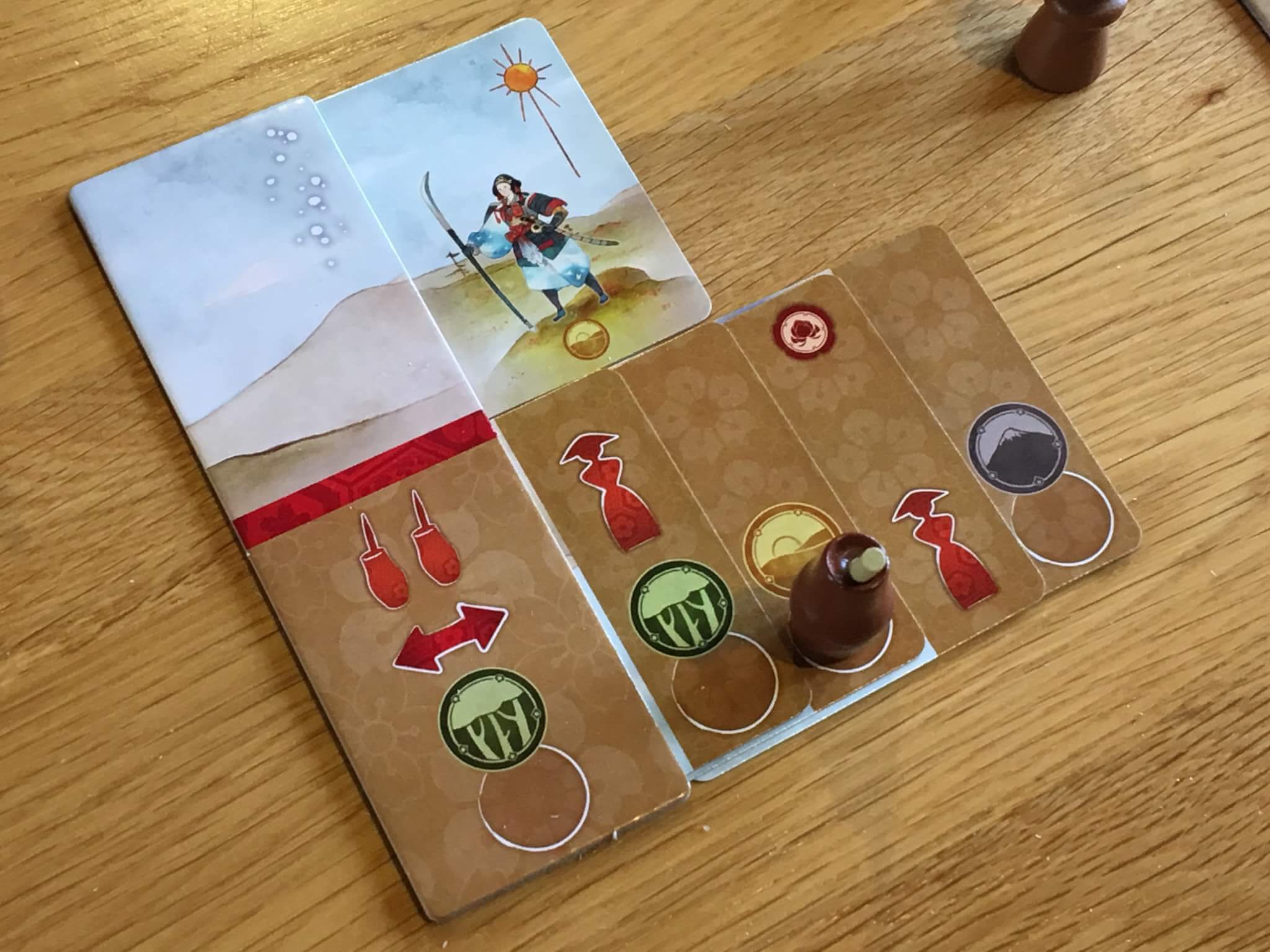
When the icon side of a card is used, the card will be flipped and placed with the painting hidden, beneath the player board (or the previous card) leaving just the icons showing. If the painting is used, then the painting will be added to the top of the players tableau, again tucked beneath the preceding painting. To use the painting side, the player must pay the appropriate cost in paint by moving paint pots (each player begins with two) onto matching coloured spaces along the icon row.
Whilst this is a little hard to explain, it can basically be summarised as the player using the lessons learned and resources gained from observing the master painting to expand their skills and then putting those skills into practice to replicate his work. The objective of the game is to obtain various diplomas that relate to either the paintings being placed in a tableau or the overall expansion of the studio.
Diplomas include milestones such as having a certain number of buildings, animals or people across the painting and each diploma comes in tiers, with more points for harder to achieve diplomas. One really interesting feature from a gameplay perspective is the fact that if a diploma is not taken when the milestone is reached, then it can never be taken by that player — they must push on to achieve the next level diploma in that area or risk losing all of their work.
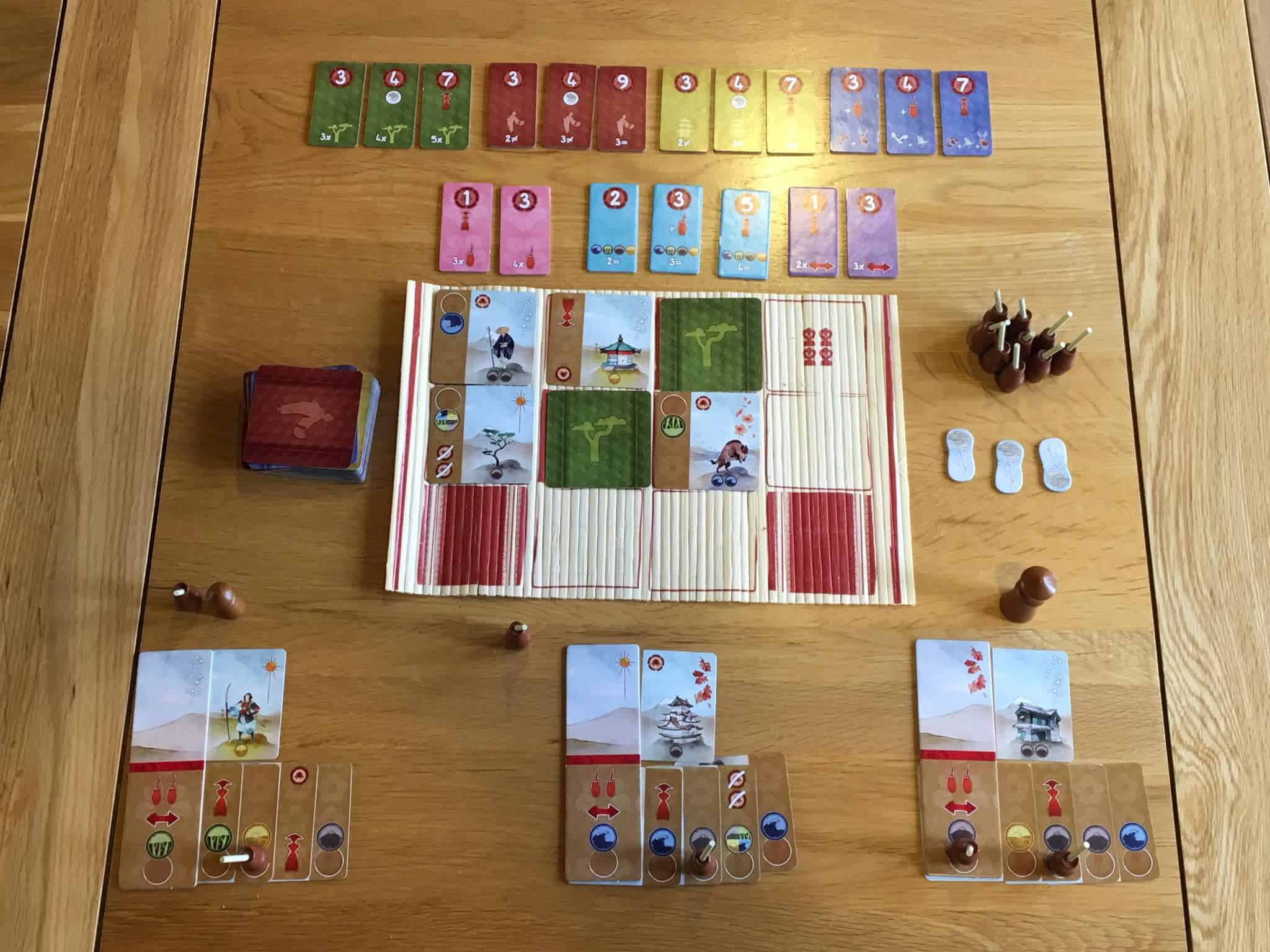
Each diploma is worth a fixed value, known as its harmony point value and some of the lesson cards also have harmony bonuses and penalties on them. As you might have guessed, the player who ultimately has the most harmony points will be declared the winner, following any subtractions. The maths in Kanagawa is relatively straightforward and it’s usually possible to understand who is leading right up to the closing turns. The game ends either when the last lesson card is placed or when a player adds the eleventh print to their tableau.
There are a number of things that I like about Kanagawa, most of which are seemingly by design. Firstly, it looks fantastic when setup, but not in the usual way. Most attractive board games use bright colours, bold artwork and eye catching pieces, but Kanagawa is appealing almost because it is the opposite of these things. It’s understated, but beautiful. The colour palette is subdued, but the watercolour artwork that it depicts is detailed and intriguing.
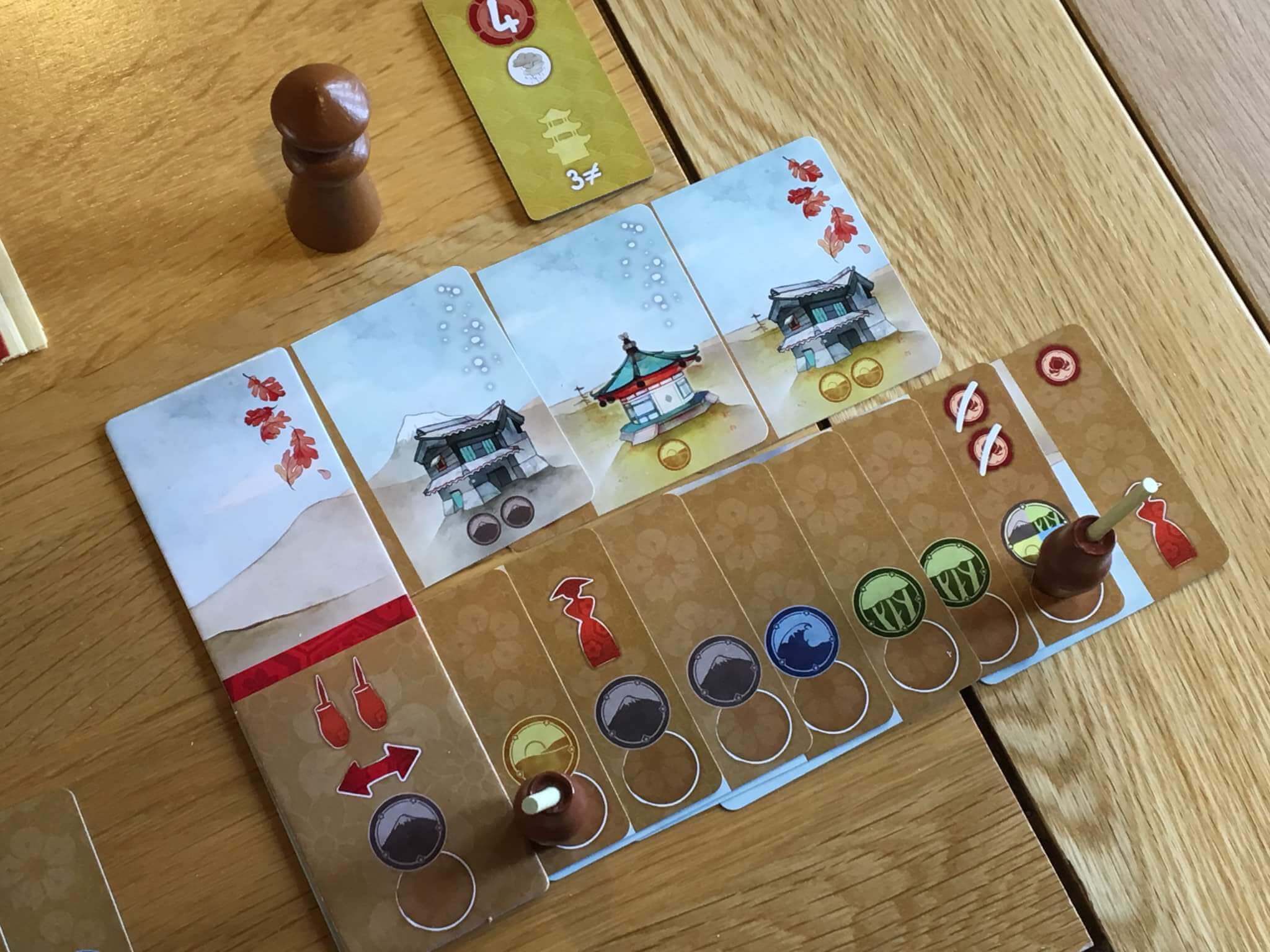
The soothing, relaxed art style is mirrored by the gameplay, which is tense and competitive, but never confrontational. Kanagawa presents a theme that features friendly rivalry between competing students — likely friends — and that is very much the way it feels to play. There is some resource denial and often a push to achieve something that another player might also be aiming for, but there are also enough diplomas for everyone to focus on something unique and different if they so choose.
Kanagawa presents itself as a zen like experience and it is fairly rare in that it actually achieves that both mechanically and visually. It’s a simple game to teach and an undemanding one to learn, yet there’s a level of mastery that is worth chasing and a competitiveness that grows over repeated plays. There are few games like Kanagawa in either look or feel, meaning that it deserves at least enough of your time to give it a try, if not to add it to your collection on a full time basis.
Kanagawa is available for purchase now. You can find out more about the game by checking out IELLO’s website, here.

Comments are closed.